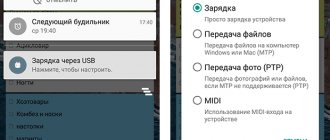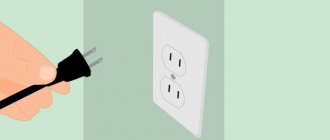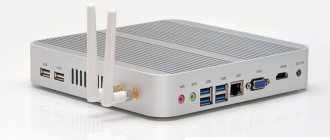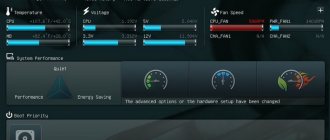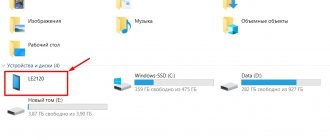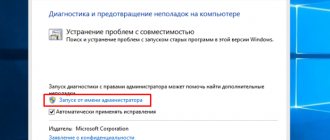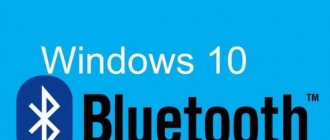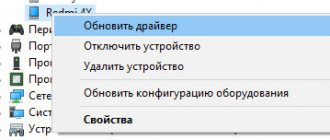Over the past few years, flash storage media have become very popular and are used by us literally every day, due to their advantages over disk storage media. It is hardly possible to overestimate the usefulness of flash media, because you can quickly write or read information on it, it does not take up much space in a briefcase or bag, and the price segment is pleasantly pleasing.
Despite all the positive aspects, sometimes situations occur when you cannot read the data due to the flash drive or computer itself. After all, at the most important moment, you may lose access to stored files, and in order to quickly return everything to normal, you need to have certain knowledge. In this article we will analyze all possible problem situations and find ways to solve why the computer does not see the flash drive.
The most common problems why the computer does not see the flash drive:
- The flash drive itself does not work
- The USB port on the front panel of the computer is de-energized
- The USB port on the computer is faulty or disabled
- The USB flash drive connector is dirty
- Viral infection
- Drivers failing or using outdated drivers
- File system errors
- File system conflict
- Flash drive is not formatted
- There is a problem with the partition or the flash drive is automatically assigned a busy letter
- Malfunction of the power supply or excessive current overload of the USB portal
- The computer does not see the flash drive in Windows XP The computer does not see the flash drive due to Windows XP errors
- Driver conflicts in Windows XP
The flash drive itself does not work
This is the worst situation for a person whose documents are stored on a flash drive, because it is almost impossible to bring it back to life. A flash drive can be damaged by mechanical impact on the device chip or its controller, by shorting an electrical circuit, or by damaging the contacts on the USB board. This is what a flash drive looks like after the electrical circuit is closed or moisture gets inside the drive.
It is quite easy to determine whether this happened to your drive. The very first thing you need to do is check the flash drive for mechanical damage, chips, cracks, etc. If it is completely broken, you can look for a replacement at a computer peripherals store. If you doubt its inoperability, you can check it using a practical method.
Connect the flash drive to the USB connector of the computer, if the LED on it lights up and you hear a sound on the computer that is typical for connecting a new device, then everything is in order, it makes sense to look for the problem further. If this does not happen, the flash drive is most likely no longer suitable for use.
You can try to take the flash drive to a service center, where the technician will try to resolder the contacts or replace the controller, but this will be very expensive, and this action will only be justified if you have important documents stored on it. If no fatal malfunction was detected and the flash drive shows signs of life, try the methods to restore its functionality, which will be described below.
Flash card is broken
If you suspect that the flash drive might be broken, you need to visually inspect it. If there is mechanical damage, there is a possibility that it is completely damaged, and it is impossible to save the information on it and continue to use it.
But if the damage is minor, there is a chance that performance has not been lost. To check if your device can be restored, you need to connect it to your PC. If the LED lights up, then there is a chance to restore the functionality of this gadget.
The USB port on the front panel of the computer is de-energized
This problem is very common among desktop PC users. Most computer owners are accustomed to inserting a flash drive into the front USB ports, because it is fast and convenient.
But there is a situation when, during PC assembly, for some reason the front panel is not connected to the power system; usually this happens due to the forgetfulness of the computer technician. Accordingly, your flash drive will not be displayed, despite its full serviceability.
This problem can be solved in two ways. If you urgently need to use information on removable media, you can connect it to the back panel of your computer. The front connectors will still remain inoperative, but you will have access to documents. Such manipulations cannot be called a full-fledged solution, so let’s consider the second option.
Method No. 2 involves connecting the power cable on the motherboard to the front panel of the computer. Depending on the computer case model, the connection connectors may differ. But don’t be afraid, they all have markings and you won’t be able to connect the wrong connector due to design features. The most common wire types are “VCC”, “D-”, “D+” and “GND”. Moreover, the color markings of the cable and the connector on the motherboard are the same, but it is better to keep a guide by the inscriptions.
The first step is to gain access to the motherboard; to do this, unscrew the mounting bolts on the case and remove the cover. Find the cable that leads to the front panel and find the same connector on the motherboard. In the image below you can see what the connector should look like.
Connector on the motherboard for connecting the front panel
It is not recommended to make the connection yourself; it is better to call a specialist. If you connect the cable and connector incorrectly, you can burn these contacts and even devices. If you decide to connect front USB connectors, then it is better to tell us the model of your case and motherboard, and we will tell you how to do it correctly and explain what the connector and cable look like.
Recovery methods
When no problems are found with the system, you can use special recovery programs:
- ChipGenius – determines the manufacturer and other information about the device;
- AlcorMP – reflashes usb flash controllers from most manufacturers;
- JetFlash Recovery Tool – flashes flash drives from Transcend.
If your computer says "Insert disk" when booting, the problem may be outdated drivers that should be removed.
For this:
- When the computer is turned off, disconnect all USB devices (except the mouse and keyboard);
- turn on the PC;
- download the DriveCleanup program;
- Depending on the OS version, copy the 32-bit or 64-bit “drivecleunup.exe” to the C:WindowsSystem32 folder;
- go to the command line and write “drivecleunup.exe”;
- drivers will begin to be uninstalled:
After this, restart your computer. Insert the flash drive and the system will find new drivers for it.
A flash drive may not be detected for many reasons, the main of which are a malfunction of the device or USB port, as well as system errors, most of which can be eliminated by correct formatting and installing drivers. Some programs can also help restore USB flash, so you should follow the instructions in order.
The USB port on the computer is faulty or disabled
Sometimes the problem of unreadability of information on removable media is not related to the problem of the flash drive itself, but to the connector into which it is connected. A certain USB port may not be working, and this condition can be caused by simple damage to the connector contacts. Then not only the flash drive, but also other USB devices will not work in this port.
You can solve this problem by arming yourself with a regular soldering iron and minimal knowledge of circuit design. If you don’t have such knowledge, skills and equipment, then it can be fixed at the nearest service center for a low fee.
However, if no response to connecting a USB device is observed on all connectors, then the problem may lie deeper. Ports can be disabled in BIOS settings.
In order to connect ports in the BIOS menu, you need to get there initially. To enter the BIOS in the first seconds of booting the computer, you need to press the corresponding key on the keyboard, which is responsible for calling up the menu. Most often, the default key is F2 or Del, but depending on the motherboard brand and BIOS version, it may be different. It is indicated in the first image that pops up when loading.
After you have entered the BIOS itself, we need to follow the following route: “Advanced Settings -> USB Configuration”.
Advanced Settings -> USB Configuration
Find the line “USB Controller”, so that you are allowed to use the ports, the value opposite should be “Enabled”.
Set Enabled to USB Controller
Once you have enabled the USB ports on your computer, press the F10 key. This will save your settings and exit the BIOS.
Reboot BIOS via F10
Setting up the power supply
On laptops, if problems arise with displaying the drive, it is recommended to change the power configuration:
- Expand the Start menu, launch Control Panel.
- Go to the “System and Security” category, select “Power Options”.
- Set the switch to “High performance” and click on the “Set up power plan” hyperlink.
- Click Change advanced power settings.
- Expand the “USB Settings” tree, go to “Option to temporarily disable a USB port.”
- Change to "Prohibited".
- Click Apply, OK.
Configuring power supply for USB ports
After applying the new configuration, it is recommended to restart the computer.
The USB flash drive connector is dirty
A flash drive is a mobile information storage device and is therefore often carried in pockets, briefcases or as a keychain. Due to such operating conditions, dust and small debris may accumulate in the connector. This does not happen often, but it can cause the flash drive to malfunction. Dust and small debris accumulate on the contact and prevent connection from the contacts in the port on the computer. Such a flash drive may not only not be displayed at all, but also freeze, transfer or read information slowly and may not be detected the first time.
To clean the USB connector of a flash drive, arm yourself with a match and a cotton swab. Using a match, remove all debris from the connector, and then moisten a cotton swab with alcohol and wipe the contacts of the flash drive. This way you will rid it of debris and oxidation.
Removing static voltage
Static voltage may build up on the USB port pins and affect the operation of the device. To fix the problem you need to:
- Turn off computer.
- Unplug the power supply from the outlet or disconnect the charger in the case of a laptop.
- Wait three minutes.
- Slowly run the back of your hand along the back wall of the system unit.
After this, the static voltage will go away and the operation of the USB controller may return to normal.
Note! Correct operation of the drive may depend on the number of connected devices. It is recommended to disconnect unnecessary devices and insert the flash drive into the computer on the back wall of the system unit.
Virus infection
Nowadays, the issue of storage device security is becoming more and more urgent, because viruses are in full force. You can visit your usual social networking site on the Internet and get infected, not to mention downloading files from unverified sources.
Modern computer viruses can also reproduce, no matter how strange it may sound. They infect files located on your flash drive or computer hard drive, and their number grows exponentially.
Very often, the problem of a flash drive not working is infection with viruses. The drive is detected by the system, you can hear the characteristic sound of the device connecting to the system, but when you try to read the information, you will see the message “Removable media not found” or “Application not found.”
Removable media not found
Before solving this problem, you should install anti-virus software on your computer and conduct a full diagnostic of the files. To access the data on the drive, we need to delete the file with the virus and scan it. To do this, go to the “Start” menu and enter the following phrase “Show hidden files and folders” in the search line.
Show hidden files and folders
Click on the found element with the left mouse button. You will see a window open called “Folder Options”, here you need to do the following:
- Uncheck the “Hide protected system files” option
- Check the box “Show hidden files, folders and drives”
After this, be sure to press the “Apply” button and only after that “Ok”, otherwise the changes will not take effect. It should look like this.
Show hidden files, folders and drives
After that, go to “My Computer” and go to the folder of the drive itself. There you will see the “Autorun” file, you need to delete it, and check the flash drive for viruses with one of the free antiviruses; the Dr.WEB Cure It utility will do an excellent job of this.
Now you can fully use the flash drive and no problems should arise. If nothing has changed, then the problem lies in the lack of drivers; we’ll look at it below.
Required OS updates for operation
When Windows XP is installed, the flash drive may not be recognized due to outdated updates required for its operation. However, some flash drives can work in PC USB ports, while others cannot.
The main updates required for normal operation of USB devices:
- KB925196 – incorrect recognition;
- KB817900 – port operation stops after the device is removed and reloaded;
- KB968132 – errors when connecting several flash drives;
- KB88740 – Rundll32.exe error;
- KB895962 – stops the USB device after turning off the printer;
- KB871233 – the flash card does not work after the PC wakes from sleep or hibernation;
- KB314634 – support only older USB devices;
- KB312370 (2007) – USB 2.0 support.
Drivers failing or using outdated drivers
A very common problem is when the computer does not want to display the flash drive due to outdated drivers or their system failure. The failure may occur due to a power surge or unexpected shutdown of the operating system. Or older computer models may not work with drives with a capacity of 32 GB or more. One thing can be said, the problem can only be solved by updating the drivers.
The first thing you need to do is go to Device Manager. You can do this in several ways, for example, through “My Computer” or find this section in the system search, which is what we will do.
device Manager
We go to this menu, after which we connect the flash drive to the computer, after which we open the “USB Controllers” subtab. Select the line “Storage device”, right-click to open the system menu and click “Delete”.
In USB Controllers, remove the Storage Device
Such manipulations allow you to remove the drivers installed on the system for your storage device. As soon as you remove it, feel free to remove the flash drive from your computer and connect it again. Then the driver for the flash drive will be installed again and the problem will be solved.
If the problem is not solved, you may need to update the drivers for all USB chipsets; this is quite easy to do. You can use the special disk that came with the motherboard; all the necessary drivers are recorded on it. If you don’t have it, download the DriverPack program, it will automatically select all the drivers for which there is an update and carry out this procedure after your agreement.
Moreover, most users have doubts about the correctness of their actions when they learn about the different USB formats. Don't be scared!
Drivers for USB 2.0 and USB 3.0 are installed according to the same principle. And the only difference between the ports is the maximum speed of reading and writing information.
"No media" (removable device) error: what to do first?
Now let's start troubleshooting. And first of all, let's focus on flash drives and external hard drives connected via USB interfaces. After all, why does the system report that there is no connected media (the removable device in Windows 10 is simply not in the list of drives)? Yes, only because the latest modifications of these operating systems are very picky in terms of the strictness of the connection in accordance with the standards of the interfaces and devices used. For example, a flash drive or removable disk is designed to work only with USB 3.0, but you connect such a device via a standard 2.0 port. It is clear that the drive will not be recognized. But in the case of the opposite situation, everything can be quite normal.
Thus, if a notification is issued that there is no attached media, you simply need to connect the removable device to another port and then check its functionality.
File system errors
The computer may also not recognize your flash device due to file system errors. Let’s check if this is true, go to “Device Manager”, as described above. Now you need to open the “Disk devices” subtab, if you see your flash drive there, it means it is working, and the file system does not perceive it as it should, and, accordingly, does not display it in Explorer. In my case, the flash drive was displayed, which means it is working.
Checking our flash drive in Disk Devices
To fix this problem, you must format your flash drive, but this action has several nuances, so we will consider this process in the next paragraph of the article.
If you don’t see your drive there, then the problem lies in the malfunction of the flash drive itself, which means either the controller is burned out or the contact has become unsoldered. Specialists at service centers can try to bring it back to life. However, this is an expensive endeavor; it’s easier to buy a new one, of course, if important information was not recorded on the faulty one and you need to restore the data on the flash drive.
Setting up USB in BIOS
The flash drive may not be recognized due to USB ports being disabled in the BIOS. This happens very rarely, but it's best to check your settings just in case. Please note that no device will be recognized in a disabled USB port, so if others work fine, then skip this step.
To enter the BIOS, restart the computer and press the Del or F2 button while turning it on. Different PCs may have different keys, so look at what is written on the screen (approximately “Press F2 to enter Setup”). If a blue table with settings opens, then everything is correct - you have entered the BIOS.
Now you should find the menu item in which the inclusion of USB is regulated. Its name may vary, but most often it is the Advanced (Peripherals, Integrated Peripherals) tab:
In it, look for the item USB Configuration/Controller, etc. There are a lot of BIOS menu options, so it’s quite difficult to specify the exact item. But the word USB must be present. Now make sure that USB support is “Enabled”, if not, then switch them:
Some BIOS versions not only regulate how the controller turns on, but also indicate its operating mode - V1.1 or V1.1+V2.0 (there is already 3.0). Choose the option that supports all directions (V1.1+V2.0). Save the settings and exit the BIOS (most often the F10 key).
File system conflict
Quite often, the contents of a flash drive are not displayed due to a conflict between the file systems on the computer and the removable media itself. For example, if the computer operates on the NTFS file system and the flash drive uses FAT32, a conflict situation cannot be ruled out. Moreover, this problem is common not only in Windows, but also in Mac OS. For example, if you format a flash drive on your Mac device to ExFAT or the standard MacBook file system, the flash drive is unlikely to be readable on Windows devices.
The very first thing you need to do is find a computer that uses a different file system, open the flash drive and save the information that is important to you, because after formatting it will be lost.
To solve this problem, we need to carry out the process of formatting the flash drive. First you need to find out what file system is used on your computer. Go to “My Computer”, right-click on the hard drive, open the submenu and select “Properties” in it.
My computer - Flash drive properties
In the window that opens, you will see information about the free and used amount of disk space, and also find out what file system is used. In my case, the NTFS system is used.
Flash drive file system
After you know the file system of the computer, we need to format the flash drive into the same system. To do this, right-click on the flash drive and open the “Format” tab.
Format the flash drive
In the tab that opens, select the file system into which we will format, check the box next to the “Fast” attribute and click “Start”.
Formatting Settings
A few words about why we use the “Fast” attribute. Firstly, formatting a flash drive will happen much faster. But there is another side to the coin. If there were any documents on the flash drive, then only with quick formatting will you be able to recover this data using special utilities. If you do not check the box, then the information that was on the flash drive will be lost forever.
The flash drive stopped working due to a relatively complex failure of the USB drive
No one is immune from serious damage to a USB flash drive, including physical damage to internal components, chip chipping, short circuit of the flash drive's electronic board, or deformation as a result of increased temperature or improper use of the device.
The easiest way to determine if a flash drive is broken is by eye: deformation of the case, thermal effects, or other mechanical damage. If a USB flash drive falls on the floor, the connector connecting the board to the USB connector on the computer could break off.
What to do? You can read about how to repair a Kingston flash drive and other models in the article at the link. However, we must honestly admit: most likely, repair is impossible, or repairing the drive will cost a lot of money. In addition, not every specialist in your city will undertake resoldering of chips without a donor.
The flash drive is not formatted
A fairly common problem is when you insert a flash drive into your computer (usually a new flash drive and its first use), and the operating system gives you a warning that states that the removable drive needs to be formatted before use. And if the flash drive has been used before and there is data written on it, then there is no way to access it. Moreover, the volume of the flash drive becomes 0, i.e. as if there was nothing there at all, not even a storage device.
If you have already used a flash drive and this is not the first time you have connected it, then try connecting it to another computer, perhaps the problem will go away and you will be able to save the data. But in any case, the flash drive must be formatted. How to do this was discussed in detail in the “File system conflict” section.
But I want to draw your attention to two points. To avoid problems with the file system (FS) after formatting, find out what FS is used on the computer and install the same one for the drive. And secondly, if the flash drive had the information you needed, then be sure to use the “Quick” attribute, so the flash drive will be formatted only according to the table of contents, and the lost information can be returned using special utilities.
There is a problem with the partition or the flash drive is automatically assigned a busy letter
There are situations when the operating system does not correctly detect your removable media. Everything seems to be fine, the device connection is displayed and a flash drive icon appears in the tray, but there is no way to use it for its intended purpose.
The problem may be that the system has not assigned the partition a letter under which the removable drive will appear, or it has assigned it, but this letter is already occupied, and this results in an address conflict.
The solution to this problem will be to force the assignment of the partition letter that we choose; everything happens manually. So let's get started.
First of all, you need to hold down the key combination “Win + R”, a window called “Run” will open in front of you.
In the line we need to enter a simple command diskmgmt.msc, which will take us to the disk and drive management section.
Run – diskmgmt.msc
In the storage media manager that opens, we need to identify our USB device. This can be done simply, disconnect the flash drive and connect it again, the partition that first disappears and then appears is what we need.
Disk and Storage Manager
In my case, the flash drive is a drive with the name “20151114_17”, you can also identify it by a special icon. Now you need to right-click on it and select “Change letter” in the menu that opens.
Assign a letter to our flash drive
Now another additional window will open in front of us, a smaller one. In it you need to click on the “Change” and “Ok” button.
Changing the drive definition letter
Now another auxiliary window will open, where you must select any letter of the English alphabet, and after clicking on the “Ok” button, the letter will be assigned to the section.
Assigning a letter to a partition
It is worth paying attention to one important point! When choosing a letter to assign to a partition of your flash drive, look at which letters are already in use by the system. This is very important, because we may not fix the problem, but leave it. This will happen if, for example, you designate a flash drive partition with the letter “D”, which is already assigned to the local disk.
Adding a drive letter to an external drive
Press the Win+R key combination and enter diskmgmt.msc to enter disk management.
In the "Disk Management" section, check if your external drive (flash drive) has a letter. If there is a drive letter, it will appear next to the drive name as shown in the image below. If there is no letter, you will need to follow the next steps.
- Right-click on the flash drive you want to see in My Computer Explorer and then click Change Drive Letter or Path .
Click the Add . Clicking the Add button will open the Add Drive Letter or Path dialog box. As you can see in the image below, Windows 10 automatically assigns a drive letter to the selected flash drive, but you can choose your own letter by clicking the down arrow next to the drive letter. Click OK to complete the process.
Malfunction of the power supply or excessive current overload of the USB portal
This problem is very common these days. The fact is that the computer may simply not see the flash drive due to a faulty power supply. Let's look at it in order, the power supply consumes electrical energy from the network, and then converts and distributes it to all nodes of the computer. It has a power limit, for example, a 400W power supply will not be able to give you 600W. This means that the consumption of the entire system must be balanced.
This problem may appear if you have recently replaced some important component in the system, let it be the processor. Now it consumes much more energy compared to the past, which means it simply doesn’t reach somewhere, and in this case, that “somewhere” is the computer’s USB network. Accordingly, the energy consumption parameter must be calculated in advance, and if such a situation has already occurred, you will have to replace the power supply with a more powerful one.
Moreover, the problem may lie in a malfunction of the power supply; it may produce much less power potential than stated, and than it produced before. You will not be able to solve this problem, since you risk the performance of the entire computer. The only solution is to replace the power supply.
There is one more feature to this question. Recently, USB devices for computers have become very common, let’s say the following devices are now powered: a mat for warming a cup, a desk lamp, a wireless mouse, a removable hard drive, and in addition, a smartphone is also charging. And you want to connect a flash drive, but bad luck, the computer sees it. The fact is that there was an overcurrent on the USB ports. Those. All your devices already consume the maximum amount of current and you will not be able to connect another one. Therefore, to use a flash drive, you need to disconnect several devices from the computer’s USB ports and then the problem will disappear.
Reasons why the system does not recognize the device
To operate a USB device, it has a built-in special controller. If there is a certain failure, it may become blocked, which will prevent the computer from recognizing the flash drive.
The reason for the failure may be a power surge, sudden removal of the flash drive, incorrect formatting, etc. Violations of this type can still be corrected, but in case of mechanical or thermal damage, it is impossible to restore the operation of the flash drive.
You can understand that the flash drive is not detected by the computer by the following factors:
- The USB device is connected, but the computer says “insert disk”;
- The message “Device connected, not detected” pops up;
- issues a request to format the flash drive;
- a data reading error message appears;
- The indicator on the drive is on, but it is not displayed on the computer, etc.
The cause of the failure may also be:
- non-working computer USB ports;
- outdated drivers;
- viruses on the device;
- settings failures in BIOS;
- different file systems of the USB device and computer;
- assigning the letter of the connected hard drive to the flash drive, etc.
If the computer does not see the flash drive in Windows XP
There are many reasons why a flash drive may not be detected in Windows XP. Moreover, the problem may lie in the operating system itself, or in a faulty flash drive, or even in the computer hardware.
If the problem is related to the operating system, then it can only be eliminated by making additional changes in the settings; this is best done manually, despite the abundance of special utilities that can help in this matter.
However, if the drive itself is faulty, then the only thing you can do is try to save the data recorded on it. And after that, purchase a new and more reliable device.
If your computer cannot detect the flash drive, it notifies the user with the following signals:
- Your flash drive is inserted and you try to access the data on it, the message “Insert disk” pops up.
- The system notifies you that the drive must be formatted for further use.
- Errors appear about the impossibility of gaining access to data.
- The system may freeze as soon as you plug the USB flash drive into the computer's USB port.
In this section, we will look at all the most common reasons for the non-functionality of a flash drive in Windows XP and give practical recommendations for solving them. Carefully read the description of the problem, if it is not similar to yours or its solution did not help you, move on to the next point until the problem goes away. The first thing you need to do is try to determine whether the flash drive is working. This is indicated by a light indicator located on it. If you connect the drive and it blinks or lights up, then the flash drive is working and the problem lies either in the system or hardware of the computer.
Try changing the port into which you connect the flash drive or even the computer; perhaps only the port or the entire system is faulty, but on another PC the flash drive will work properly. For example, if, when connecting a flash drive to a port, you observe a complete system freeze, this means that this port is faulty and it is better not to use it.
If you are using USB hubs or extenders and the flash drive is not displayed, perhaps the problem lies in the device itself, and not the flash drive. If this turns out to be the case, you can take the hub to a service center or try to repair it yourself. To do this you will need a soldering iron, solder and a little experience, because most often you just need to solder one or two contacts and everything will work as expected.
Perhaps the problem lies in the lack of electric current in the USB port system. To check this, you need to disconnect all USB devices on the computer (camera, printer, lamp, etc.), leaving only the keyboard and mouse. If after such manipulations the flash drive appears in the system and you can access it, then the problem lies in a weak power supply. This problem can only be solved by replacing the power supply with a more powerful one, but using a USB hub with its own power source will help delay the purchase of a power supply.
However, if the problem is not resolved after disconnecting all other devices, the problem may still be related to the lack of power from the power supply and an outdated USB port. In other words, on older laptops you will not be able to open a flash drive with a capacity of 36 GB or larger. There is no way to solve the problem; you can only buy a more modern laptop or computer.
A very common situation occurs when the user connects a flash drive to the front port of the PC, but the system does not see it. This means that the ports are not connected to the power supply on the motherboard, or too little power is allocated to them. You can connect the front panel yourself using the instructions located above in the section of the same name.
Can't see the flash drive due to Windows XP errors. Troubleshooting
The flash drive may also not be detected due to operating system errors. For example, Windows XP SP2 lacks updates and software packages that ensure the normal operation of USB devices. Moreover, it is possible that only several USB devices can work in one port.
The solution to this issue will be to update the system to SP3 and install the necessary updates. Even a new user can do this, since we only need a couple of clicks, and the system will automatically download, install and launch the update. So, let's get started, we can move in two ways - this is an official download from Windows Update or installing SP3 from a disk or flash drive. The first step is to check which package you already have installed.
Right-click on the “My Computer” icon and select “Properties”. The following window will open in front of you, where information about your system will be indicated.
Checking whether SP3 is installed in Windows XP
To install SP3, we need to allow the operating system to search and update the computer system. To do this, just go from the Control Panel to Windows Update.
Control Panel in Windows Update
As soon as you do this, the system will begin searching for updates, after which it will offer you to update everything at once or select only the ones you need. If you don't understand what update changes what, then it's better to let the system update completely.
After downloading all the updates, the operating system will require you to restart your computer to apply the new settings. Click “Ok” and wait patiently. That's all, now you can connect the flash drive and use it.
If you decide to choose the updates that should be installed, and not download them all automatically, then here is a guideline that will help improve the system's perception of USB drives.
Driver conflicts in Windows XP
There is also the problem of driver conflict. The fact is that some outdated drivers can cause errors at the system level, moreover, they can prevent the normal operation of new drivers. A striking example of such a problem is a situation when a user inserts a flash drive into a computer, tries to access the data on it, and the system immediately displays an error message asking to insert the disk. Or, the system simply freezes, and even assigning an existing letter to a flash drive partition is possible.
The reason for such errors is as follows. Let's say you have two flash drives, you connected one of them to the system. In automatic mode, all necessary drivers for this device are immediately installed. You have made the necessary manipulations to write or read files and removed the drive. After that, you insert a second flash drive, which is completely working, and one of the above errors pops up. This means that the system is trying to use the already installed driver from the first flash drive to launch the second, but they are not compatible.
Reinstalling Windows XP drivers for USB devices
This problem can be easily resolved in several ways. Reinstalling drivers automatically or manually. Let's look at a little theory: a driver from one USB device can be mistakenly used by the system to launch another USB device. To eliminate these problems, we need to first remove all existing drivers for USB drives, and then reinstall them.
Such a problem may display the message “USB device not recognized,” or unexplained processes occur at the system level that block access to data or cause the system to freeze.
Remove via DriveCleanup
You can effectively remove all existing drivers for USB devices using the DriveCleanup utility. Its advantage is that it searches the entire system for installed drivers and only then removes them.
First of all, turn off the computer and disconnect all USB devices from it in order to avoid conflict situations while the program is running. Turn on the PC, go to the official website of the program and download the executable file. The utility is compatible with any version of Windows, including different bitmaps. When downloading, pay attention to the file version.
Then you can simply run the program as an administrator by right-clicking on it and selecting the appropriate item. The program will immediately begin searching for drivers and preparing them for removal.
However, more advanced users are advised to do the following:
- Move the program executable file drivecleanup.exe to the System folder
- After that, write “CMD” in the search and open the command line.
- In the command line, enter the phrase “drivecleanup.exe” (the name of the executable file) and press Enter.
We write drivecleanup.exe on the command line - The command line will display information about all drivers and begin preparing them for removal.
The process of removing drivers using the driveclenup utility
Automatic installation
You have removed all drivers from your computer. In order for a device to function normally, the operating system must have drivers for it. The automatic driver installation process is incredibly simple, you just need to plug the USB flash drive into the USB port, after which the installation will begin immediately. A window will pop up that will display the installation progress; on some systems this may occur in a mode invisible to the user. Within one to two minutes, the installation will be completed and you will be able to use the device.
Manual installation
Manual installation means installing drivers not directly from the storage medium itself. We can also install drivers for a flash drive from third-party Internet resources, but to avoid conflict situations, we will install drivers for a flash drive using another computer.
So, we take our problematic flash drive and insert it into another computer, where it is recognized. A prerequisite for this process is that the versions of Windows on both computers match. We use the system search and find two files.
We transfer them to the problem computer by any means, be it sending by mail or using other removable media. You need to place these files in a folder with the same path that was on the first computer and confirm the replacement when the corresponding window pops up. We reboot the computer and enjoy its performance with FLASH disks.
Problems with extension cords and splitters
If you use various kinds of extension cables and splitters (USB hubs) to connect external USB devices, there is a high probability that the PC does not see the flash drive because of them. Cheap crafts from AliExpress create problems most often.
Options for solving the problem
In this case, checking is carried out simply by connecting the drive to the USB port directly. If the flash drive works, but you still need a USB hub, you can arrange additional power. Usually, even the cheapest devices have a connector for an external source. You will need a power supply with an output voltage of 5 volts and a plug suitable for the connector.
Some hubs are sold with a power supply included.
A sales assistant in a store will help you choose the right power supply. But if this recommendation does not help, you will have to purchase a higher quality USB hub or look for the cause of the problem elsewhere.
Possible problems and tips
We looked at only the most common reasons why a flash drive is not visible on the computer. In fact, there are many more of them. Moreover, there are problems that are expressed by other system messages, and their solution is already described in the paragraphs of the article.
The “Insert disk” message appears even if the flash drive is already connected to the USB port
This system error occurs if drivers overlap each other and interfere with the normal functioning of USB devices. In order to fix this error, you need to remove all drivers for USB devices and install them again. This process is described step by step in this article.
Message about the need to format the disk
This message appears if you are using a flash drive for the first time or if it has experienced a system failure. In addition to the message, you can make sure that it is not suitable for use, because it does not display either free space or occupied space. The solution to this issue is described in detail in paragraphs 8 and 9.
Data error message
This problem occurs in 3 cases. This is a driver conflict, a file system conflict, and a failure of the flash drive itself. It can be solved by reinstalling the drivers; if that doesn’t help, then do a quick format to preserve the ability to recover data on the flash drive. Step-by-step instructions are above.
Complete system freeze immediately after connecting the flash drive to the computer
This issue has already been discussed in the article, but I would like to point out that this error can occur for two reasons:
- Driver conflict.
- Faulty port.
It’s easy to check what problem you have, insert the flash drive into another port, if the freeze continues, it means there’s a problem with the drivers. Instructions and tips for reinstalling them were given as part of this article.
Why does the computer not see the flash drive when the indicator on it is lit?
The contact on the flash drive, which is responsible for transmitting information, may be damaged. A driver conflict and the assignment of a busy letter to a partition cannot be ruled out. If the problem does not go away after connecting the flash drive to another computer, try checking the availability of the partition. If everything is fine here, then reinstall the drivers and the flash drive will work.
Error 43 / Error 43
This error immediately stops reading information from a removable device, which means we won’t be able to immediately access the data. There are several problems that can cause Error 43.
- Malfunction of the device itself is the first of them. Check on another computer to see if this situation happens again.
- Driver conflict - solution described above.
- Updating the hardware configuration - simply roll back the driver version in the Task Manager.
FAQ
My camera, computer, tablet and even phone do not see the micro flash drive from the camera, and on it are photographs of my child for 3 years! Is there hope?
Hope, as they say, dies last. In general, it would be interesting to hear after what events the problem appeared. The fact is that from your description it is difficult to diagnose what happened to your micro SD card.
For example, if no device sees the files on a flash drive after you dropped that same flash drive into water or onto a hard surface, good for you. Try connecting the flash drive to your computer via a card reader - maybe you just connected it to the device incorrectly.
I borrowed a USB flash drive from a friend. After “cleaning” by the antivirus program, it does not see the flash drive (or any program) on any PC. During connection, a sound is made indicating that the USB is connected and the warning diode on the flash drive also works.
Perhaps the file table has crashed, so Windows does not see the flash drive. Try formatting the flash drive with proprietary software (if it is available on the manufacturer’s website). Alternatively, try a low-level formatting program - HDD Low Level Format Tool.
If there is no physical damage to the flash drive and the antivirus was the cause, there should be no other options. Moreover, formatting is the only method to programmatically influence this storage device.
When you connect a flash drive, the software is installed. Windows shows that the device is ready to use, but the PC still does not recognize it.
Go to Disk Management and check whether the flash drive is defined as a file volume or unallocated space. Next you need:
- assign a new letter to the USB flash drive through the Windows Disk Management panel
- create a new file volume
- format the flash drive to FAT32 or exFat
Silicon Power 32 GB flash drive, PC does not see it. Shows up in Disk Management as unallocated space, but when trying to create a simple volume, an error appears.
You can create a new partition by going to Disk Management through the Control Panel. The file space can be marked as RAW, and you need to create a new partition on it. In addition, there are specialized programs for working with partitions and formatting. Check out our guide on how to format a flash drive
After formatting, Explorer does not see the memory card; when you try to turn it on, the phone writes “it was not possible to safely remove the device: sandisk sd card.”
It is possible that the memory card model is not supported by your mobile device - this happens often. Besides exFAT, try formatting Fat32.
Test the card on any other Android device: is the flash drive readable? If Windows Explorer does not see the card, go to Disk Management through the Control Panel and check if there is an unallocated area. If there is, you need to format it and assign a drive letter.
I'm trying to restore photos using Recuva, but when connected via USB, the computer does not see the memory card, the phone is displayed as a portable device. USB debugging icon is enabled.
When restoring files from internal memory, you need to make an image of it (see instructions), and only then mount a copy of the internal memory as a separate disk. Only after these complex manipulations will Recuva be able to detect the disk.
If the computer does not see the SD card, and not the internal memory, then this is a different question. The fact is that you need to connect the memory card to the PC not through a cable, but using a card reader. Only then will the SD card appear as a disk.
When I tried to format the flash drive, the computer displayed a message: “The disk is write-protected.” It was not possible to format it, but the PC stopped seeing the flash drive.
You can check the functionality of the flash drive through Disk Management (Start - Run - diskmgmt.msc).
When you connect a USB drive, a new device will appear in the list. In order for the flash drive to be detected again, you need to create a new disk on it and format it. This can be done using the SDFormatter utility.
conclusions
We have reviewed in detail the reasons that may prevent a computer from reading a flash drive and the information on it. The described solutions with step-by-step instructions will definitely help you get rid of this problem. An unreadable flash drive can be a death sentence only if the flash drive is faulty. In other situations, this is an easily reversible process. If you have any questions or couldn’t find a solution to your problem in the article, leave a comment and we’ll try to clarify the situation together.
Automatic diagnostics
When a flash drive is not detected, it is convenient to carry out initial diagnostics using a utility from Microsoft. It will not solve all possible problems, but it can eliminate common errors.
Download from the official website and run if your drive is not recognized. The utility is suitable for Windows 7 – 10.

